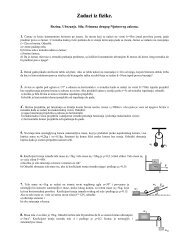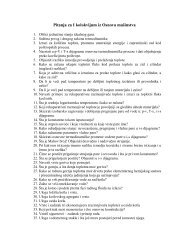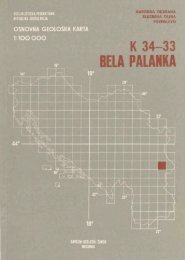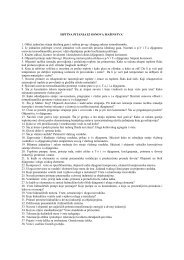Landscapes: Bridging the gaps between science, policy and people
Landscapes: Bridging the gaps between science, policy and people
Landscapes: Bridging the gaps between science, policy and people
Create successful ePaper yourself
Turn your PDF publications into a flip-book with our unique Google optimized e-Paper software.
L<strong>and</strong>scape <strong>and</strong> Urban Planning 100 (2011) 330–332<br />
Contents lists available at ScienceDirect<br />
L<strong>and</strong>scape <strong>and</strong> Urban Planning<br />
journal homepage: www.elsevier.com/locate/l<strong>and</strong>urbplan<br />
<strong>L<strong>and</strong>scapes</strong>: <strong>Bridging</strong> <strong>the</strong> <strong>gaps</strong> <strong>between</strong> <strong>science</strong>, <strong>policy</strong> <strong>and</strong> <strong>people</strong><br />
Wenche E. Dramstad ∗ , Wendy J. Fjellstad<br />
Norwegian Forest <strong>and</strong> L<strong>and</strong>scape Institute, P.O. Box 115, NO-1431 Ås, Norway<br />
article<br />
info<br />
abstract<br />
Article history:<br />
Available online 2 March 2011<br />
Keywords:<br />
L<strong>and</strong>scape change<br />
Indicator development<br />
Sustainability<br />
The centennial volume of this journal provides a fitting time to stop <strong>and</strong> reflect. Do we know where we are<br />
heading Are we progressing in <strong>the</strong> right direction Having studied l<strong>and</strong>scape change for some years, we<br />
have seen <strong>the</strong> tremendous power of engagement that can be found in l<strong>and</strong>scapes. L<strong>and</strong>scape is a <strong>the</strong>me<br />
that most <strong>people</strong> easily relate to. At <strong>the</strong> same time, l<strong>and</strong>scape research has provided many appropriate<br />
tools for documenting l<strong>and</strong>scape change <strong>and</strong> <strong>the</strong> effects of change. Yet in spite of public engagement <strong>and</strong><br />
scientific knowledge, we still find many examples of negative l<strong>and</strong>scape developments. In this paper we<br />
reflect on <strong>the</strong> applications of l<strong>and</strong>scape research <strong>and</strong> <strong>the</strong> issue of communicating scientific findings to<br />
<strong>policy</strong>, management, l<strong>and</strong>owners <strong>and</strong> <strong>the</strong> general public. Do we need a greater focus on communication<br />
to achieve sustainable l<strong>and</strong>scape development<br />
© 2011 Elsevier B.V. All rights reserved.<br />
1. Changing l<strong>and</strong>scapes<br />
<strong>L<strong>and</strong>scapes</strong> are continuously changing, as has been thoroughly<br />
documented from many regions of <strong>the</strong> world. This is not, in itself,<br />
any reason for concern. <strong>L<strong>and</strong>scapes</strong> are dynamic <strong>and</strong> many l<strong>and</strong>scape<br />
changes are also reversible. It is worth noting, though, <strong>the</strong><br />
extent to which we have increased our ability to make changes. As<br />
a result, l<strong>and</strong>scape changes are occurring both faster <strong>and</strong> on a larger<br />
scale than when L<strong>and</strong>scape <strong>and</strong> Urban Planning marked its 5th,<br />
or even 50th, volume. Many <strong>people</strong> today perceive <strong>the</strong> increased<br />
speed <strong>and</strong> extent of l<strong>and</strong>scape changes as a threat (Antrop, 2006<br />
<strong>and</strong> references <strong>the</strong>rein), <strong>and</strong> in some cases entire l<strong>and</strong>scape types<br />
appear at risk of disappearing (Green <strong>and</strong> Vos, 2001).<br />
Witnessing recent large scale l<strong>and</strong>scape changes, <strong>the</strong>ir effects<br />
have been a natural focus of research. This effort by <strong>the</strong> scientific<br />
community has been paralleled by a request from <strong>policy</strong><br />
makers <strong>and</strong> managers for scientific evidence <strong>and</strong> objective measurements<br />
on which to base <strong>the</strong>ir decisions, expressed e.g., through<br />
a steadily increasing number of indicator development <strong>and</strong> reporting<br />
initiatives. As a result, many l<strong>and</strong>scape researchers have spent<br />
considerable time <strong>and</strong> energy developing tools of various sorts to<br />
link knowledge about l<strong>and</strong>scapes <strong>and</strong> l<strong>and</strong>scape change, with l<strong>and</strong>scape<br />
<strong>policy</strong> <strong>and</strong> action. This has been a successful endeavour in<br />
terms of supplying a wide range of tools enabling comparisons of<br />
l<strong>and</strong>scapes over space <strong>and</strong> time.<br />
As <strong>the</strong> tools have become available, changes are being documented<br />
<strong>and</strong> reported. The European Environment Agency, for<br />
∗ Corresponding author. Tel.: +47 64 94 96 84.<br />
E-mail addresses: wenche.dramstad@skogogl<strong>and</strong>skap.no (W.E. Dramstad),<br />
wendy.fjellstad@skogogl<strong>and</strong>skap.no (W.J. Fjellstad).<br />
instance, reports continuously on a range of l<strong>and</strong>scape changes that<br />
are high on <strong>the</strong> political agenda, such as urban sprawl, biodiversity<br />
loss <strong>and</strong> soil sealing affecting agricultural l<strong>and</strong>. Also several national<br />
<strong>and</strong> multi-national monitoring initiatives have been launched, all<br />
reporting indicators of change (e.g., <strong>the</strong> LUCAS survey, <strong>the</strong> Dobříš<br />
assessment, The Countryside Survey of <strong>the</strong> UK, NILS in Sweden, <strong>the</strong><br />
3Q-programme of Norway).<br />
2. Failure to halt negative change<br />
At this point of retrospective self-scrutiny we may stop <strong>and</strong> ask:<br />
what are <strong>the</strong> “real world effects” of our work A gap reveals itself<br />
<strong>between</strong> <strong>science</strong>s <strong>and</strong> <strong>policy</strong> (e.g., Lenz <strong>and</strong> Peters, 2006; McNie,<br />
2007; see also Beunen <strong>and</strong> Opdam, 2011) <strong>and</strong> several authors have<br />
questioned <strong>the</strong> effect of indicator development efforts on <strong>policy</strong> <strong>and</strong><br />
<strong>policy</strong> making (e.g., Bell <strong>and</strong> Morse, 2003; Böhringer <strong>and</strong> Jochem,<br />
2007). Has our work made a difference<br />
In spite of all <strong>the</strong> scientific knowledge, <strong>the</strong> metrics, indicators,<br />
<strong>and</strong> o<strong>the</strong>r tools such as legal measures, public awareness measures,<br />
<strong>and</strong> a European L<strong>and</strong>scape Convention – l<strong>and</strong>scape changes<br />
continue unabated. Although an increasing weight of evidence has<br />
shown negative side-effects of certain types of l<strong>and</strong>scape change,<br />
<strong>the</strong>re seems to be little documentation of <strong>the</strong>se changes being<br />
avoided or reduced.<br />
Perhaps <strong>the</strong> most obvious example, considering <strong>the</strong> immense<br />
challenges of a growing world population, is <strong>the</strong> loss of agricultural<br />
l<strong>and</strong>. The topic has received particular attention in relation<br />
to urbanization <strong>and</strong> l<strong>and</strong> ab<strong>and</strong>onment, <strong>and</strong> <strong>the</strong> loss of agricultural<br />
l<strong>and</strong> has caused concern in <strong>the</strong> USA (Hellerstein et al.,<br />
2002), as well as in Europe. The European Environment Agency<br />
reports how urban sprawl in <strong>the</strong> Mediterranean coastal region<br />
0169-2046/$ – see front matter © 2011 Elsevier B.V. All rights reserved.<br />
doi:10.1016/j.l<strong>and</strong>urbplan.2011.02.003
W.E. Dramstad, W.J. Fjellstad / L<strong>and</strong>scape <strong>and</strong> Urban Planning 100 (2011) 330–332 331<br />
has led to a farml<strong>and</strong> loss of 3% during <strong>the</strong> 1990s, of which 60%<br />
was of high quality for agriculture (EEA, 2006). The Countryside<br />
survey of 2007 reports how <strong>the</strong> area occupied by buildings in<br />
<strong>the</strong> rural environment in Engl<strong>and</strong> increased by 3.9% (28,000 ha)<br />
since 1998. According to Hinrichsen (1997), China lost close to<br />
one million hectares of farml<strong>and</strong> each year <strong>between</strong> 1987 <strong>and</strong><br />
1992 due to urbanization <strong>and</strong> <strong>the</strong> expansion of roads <strong>and</strong> industries,<br />
while urban sprawl takes over nearly 400,000 ha of farml<strong>and</strong><br />
each year in <strong>the</strong> US. Even in Norway, a country with just 3%<br />
cultivatable l<strong>and</strong> <strong>and</strong> strong legal measures to protect this, agricultural<br />
l<strong>and</strong> is being converted to built-up l<strong>and</strong> (Fjellstad <strong>and</strong><br />
Dramstad, 2007). In all <strong>the</strong>se countries, farml<strong>and</strong> is being lost,<br />
even though <strong>the</strong> scientific evidence for <strong>the</strong> multiple functions<br />
<strong>and</strong> values of well-managed agricultural l<strong>and</strong>scapes is overwhelming.<br />
When even l<strong>and</strong>scapes necessary for <strong>the</strong> sustainable production<br />
of food are undervalued, it is perhaps not surprising that<br />
o<strong>the</strong>r types of l<strong>and</strong>scapes suffer negative changes. Coastal areas<br />
are subject to very restrictive development <strong>policy</strong> in Norway, <strong>and</strong><br />
a number of regulations apply. Never<strong>the</strong>less, a study in <strong>the</strong> sou<strong>the</strong>astern<br />
part of <strong>the</strong> country documented a 12% increase in numbers<br />
of buildings during a 20 year period within <strong>the</strong> designated 100 m<br />
wide zone supposedly protected from development. This is not<br />
a situation specific to Norway. The coasts of <strong>the</strong> Mediterranean,<br />
for example, have always been attractive areas for development.<br />
Here <strong>the</strong> urbanization rate in 1995 was 62%, <strong>and</strong> it has been forecasted<br />
to grow to 72% by 2025 (UNEP/MAP-Plan Bleu, 2009). In<br />
<strong>the</strong> United States, <strong>the</strong> National Oceanic <strong>and</strong> Atmospheric Administration<br />
(NOAA) reports concern over <strong>the</strong> fact that although coastal<br />
areas only comprise 17% of <strong>the</strong> contiguous l<strong>and</strong> area, as of 2003 <strong>the</strong>y<br />
were populated by more than half (53%) of <strong>the</strong> nation’s population.<br />
Similar concern over development in coastal areas is reported from<br />
a number of regions as far apart as Nova Scotia <strong>and</strong> <strong>the</strong> Black Sea<br />
coastline of Bulgaria. What is <strong>the</strong> role of l<strong>and</strong>scape <strong>science</strong> in this<br />
process<br />
3. The challenge of protecting l<strong>and</strong>scape values<br />
One positive sign of an increasing recognition of l<strong>and</strong>scape values<br />
in many countries is <strong>the</strong> exp<strong>and</strong>ing area of l<strong>and</strong> under some<br />
form of l<strong>and</strong>scape protection. Even in such areas however, scientific<br />
knowledge seems slow to inform l<strong>and</strong>scape management. L<strong>and</strong>scape<br />
protection is supposedly a ra<strong>the</strong>r strong management tool,<br />
at least requiring respect from local planning <strong>and</strong> management<br />
authorities. However, when this protection applies to l<strong>and</strong>scapes<br />
generated through agricultural activities, a number of new challenges<br />
arise. These l<strong>and</strong>scapes require human intervention if <strong>the</strong>y<br />
are to persist in <strong>the</strong>ir current state, yet <strong>the</strong> types of l<strong>and</strong> use that<br />
shaped <strong>the</strong> l<strong>and</strong>scape may no longer be economically viable. There<br />
may also be a lack of underst<strong>and</strong>ing about <strong>the</strong> how specific types<br />
of management influence <strong>the</strong> l<strong>and</strong>scape. In Norway, for example,<br />
a study demonstrated how l<strong>and</strong>scape protection was commonly<br />
interpreted as meaning a stop to human activity, leading to conflicts<br />
with local <strong>people</strong> (Fjellstad et al., 2009). Some farmers experienced<br />
l<strong>and</strong>scape protection on <strong>the</strong>ir l<strong>and</strong> as an infringement of<br />
<strong>the</strong>ir property rights, <strong>and</strong> a common feeling was that “...each<br />
generation should be allowed to make <strong>the</strong>ir mark on <strong>the</strong>se l<strong>and</strong>scapes”.<br />
Protected <strong>L<strong>and</strong>scapes</strong> encapsulate <strong>the</strong> difficulties seen in all<br />
l<strong>and</strong>scape management, where different interests <strong>and</strong> values must<br />
be balanced against one ano<strong>the</strong>r, <strong>and</strong> <strong>the</strong> rights of <strong>the</strong> individual<br />
must be balanced against <strong>the</strong> rights of society <strong>and</strong> future generations.<br />
If we look to examples of successful Protected <strong>L<strong>and</strong>scapes</strong>,<br />
can we improve l<strong>and</strong>scape development more generally, also making<br />
everyday l<strong>and</strong>scapes more sustainable<br />
4. Sustainable l<strong>and</strong>scapes<br />
An important driving force for much l<strong>and</strong>scape research<br />
probably originated in 1987 with <strong>the</strong> quest for a sustainable development.<br />
The aim to “meet <strong>the</strong> needs of <strong>the</strong> present without<br />
compromising <strong>the</strong> ability of future generations to meet <strong>the</strong>ir own<br />
needs” (United Nations, 1987) clearly dem<strong>and</strong>s a focus on <strong>the</strong> use<br />
<strong>and</strong> management of resources, including l<strong>and</strong> area. For <strong>the</strong> knowledge<br />
generated by l<strong>and</strong>scape researchers to be translated into real<br />
world changes, we probably need to focus more on answering <strong>the</strong><br />
“so what” questions. We need to highlight how one person’s “mark<br />
on <strong>the</strong> l<strong>and</strong>scape” may affect <strong>the</strong> l<strong>and</strong>scape for o<strong>the</strong>r members of<br />
society. We need to communicate <strong>the</strong> consequences of l<strong>and</strong>scape<br />
change in a sustainability perspective, <strong>and</strong> we need to communicate<br />
to <strong>the</strong> right audience.<br />
There are examples of researchers who have focused on <strong>the</strong>se<br />
challenges. Joan Nassauer, for instance, has documented one<br />
approach to achieving progress in a more sustainable direction<br />
through making positive changes attractive to <strong>the</strong> <strong>people</strong> with a say<br />
in <strong>the</strong> matter (e.g., Nassauer, 1997). Richard T.T. Forman has shown<br />
several examples of compiling complex, research based knowledge<br />
into easy-to-underst<strong>and</strong> rules of thumb for planners <strong>and</strong> managers<br />
(e.g., Forman, 2008). A more extended list is outside <strong>the</strong> scope of<br />
this paper; suffice it to say that a number of examples now exist<br />
<strong>and</strong> we are optimistic that more will follow.<br />
As our examples illustrate, even with widely accepted aims such<br />
as food security, negative trends are difficult to halt, in spite of<br />
thorough documentation. What <strong>the</strong>n to expect with aims of lower<br />
general acceptance Today, biodiversity remains a value of interest<br />
primarily to a small minority, <strong>and</strong> is sometimes even ridiculed by<br />
<strong>the</strong> broader community in cases where its protection could interfere<br />
with a desired development project. Similarly, cultural heritage<br />
preservation is often associated with large costs for developers or<br />
l<strong>and</strong> owners <strong>and</strong> may effectively stop all l<strong>and</strong> use change. It may<br />
seem that biodiversity <strong>and</strong> cultural heritage values are more highly<br />
regarded by academic researchers <strong>and</strong> planning experts than by<br />
l<strong>and</strong>owners <strong>and</strong> <strong>the</strong> general public. However, because both biodiversity<br />
<strong>and</strong> cultural heritage are so strongly linked to <strong>the</strong> l<strong>and</strong>scape,<br />
it may be that placing <strong>the</strong>se values in a l<strong>and</strong>scape context can<br />
provide a better way of communicating about <strong>the</strong>m. For example,<br />
when communicating with <strong>the</strong> general public, photographs (e.g.,<br />
www.tilbakeblikk.no) have a tremendous potential for generating<br />
interest <strong>and</strong> involvement, far beyond most tables <strong>and</strong> pie charts.<br />
Through our own studies of l<strong>and</strong>scape change, including monitoring,<br />
indicator development <strong>and</strong> communication of findings to<br />
<strong>policy</strong> makers <strong>and</strong> managers, we have clearly seen <strong>the</strong> power of<br />
interest <strong>and</strong> communication that <strong>the</strong> l<strong>and</strong>scape holds. Documenting<br />
changes in meaningful ways to different audiences can have<br />
great effect.<br />
5. Conclusion<br />
It is our hope that through <strong>the</strong> next 100 volumes of L<strong>and</strong>scape<br />
<strong>and</strong> Urban Planning, more examples will appear documenting how<br />
l<strong>and</strong>scape research <strong>and</strong> scientific knowledge have influenced l<strong>and</strong>scape<br />
development <strong>and</strong> management, in urban as well as rural <strong>and</strong><br />
natural environments. The gap <strong>between</strong> <strong>science</strong> <strong>and</strong> <strong>policy</strong> must<br />
be bridged <strong>and</strong> a dialogue established <strong>between</strong> researchers, <strong>policy</strong><br />
makers <strong>and</strong> those actively changing <strong>the</strong> l<strong>and</strong>scape – <strong>the</strong> planners,<br />
developers <strong>and</strong> l<strong>and</strong>owners – with <strong>the</strong> common goal to generate<br />
sustainable l<strong>and</strong>scapes. To achieve this, we may need to focus more<br />
effort on establishing such a dialogue, <strong>and</strong> less on development of<br />
new tools. We may not know <strong>the</strong> entire road, but by building on<br />
existing knowledge we should be moving in <strong>the</strong> right direction.<br />
The success of our efforts will be recorded in <strong>the</strong> l<strong>and</strong>scapes of <strong>the</strong><br />
future.
332 W.E. Dramstad, W.J. Fjellstad / L<strong>and</strong>scape <strong>and</strong> Urban Planning 100 (2011) 330–332<br />
References<br />
Antrop, M., 2006. Sustainable l<strong>and</strong>scapes: contradiction, fiction or utopia L<strong>and</strong>scape<br />
Urban Plan. 75, 187–197.<br />
Bell, S., Morse, S., 2003. Measuring Sustainability. Learning from Doing. Earthscan<br />
Publications, London.<br />
Böhringer, C., Jochem, P.E.P., 2007. Measuring <strong>the</strong> immeasurable – a survey of sustainability<br />
indices. Ecol. Econ. 63, 1–8.<br />
Beunen, R., Opdam, P. 2011. When l<strong>and</strong>scape planning becomes l<strong>and</strong>scape governance,<br />
what happens to <strong>the</strong> <strong>science</strong> L<strong>and</strong>sc. Urban Plann. 100.<br />
EEA, 2006. Urban Sprawl in Europe: The Ignored Challenge. Report No 10/2006.<br />
European Environment Agency, Copenhagen.<br />
Fjellstad, W., Dramstad, W., 2007. L<strong>and</strong>scape monitoring as a tool in improving environmental<br />
security. In: Petrosillo, I., Müller, F., Jones, K.B., Zurlini, G., Krauze,<br />
K., Victorov, S., Li, B.-L., Kepner, W.G. (Eds.), Use of L<strong>and</strong>scape Sciences for <strong>the</strong><br />
Assessment of Environmental Security. Springer, Dordrecht, pp. 131–142.<br />
Fjellstad, W., Mittenzwei, K., Dramstad, W., Øvren, E., 2009. L<strong>and</strong>scape protection<br />
as a tool for managing agricultural l<strong>and</strong>scapes in Norway. Environ. Sci. Pol. 12,<br />
1144–1152.<br />
Forman, R.T.T., 2008. Urban Regions: Ecology <strong>and</strong> Planning Beyond <strong>the</strong> City. Cambridge<br />
University Press, Cambridge.<br />
Green, B., Vos, W., 2001. Threatened <strong>L<strong>and</strong>scapes</strong>: Conserving Cultural Environments.<br />
Spon Press, London.<br />
Hellerstein, D., Nickerson, C., Cooper, J., Fea<strong>the</strong>r, D., Gadsby, D., Mullarkey, D.,<br />
Tegene, A., Barnard, C., 2002. Farml<strong>and</strong> Protection: The Role of Public Preferences<br />
for Rural Amenities. Agricultural Economic Report No. (AER815). Economic<br />
Research Service, U.S. Department of Agriculture, Washington, DC.<br />
Hinrichsen, D., 1997. Winning <strong>the</strong> Food Race. Population Reports, Series M, No.<br />
13. Johns Hopkins School of Public Health, Population Information Program,<br />
Baltimore, MD.<br />
Lenz, R., Peters, D., 2006. From data to decisions: steps to an application-oriented<br />
l<strong>and</strong>scape research. Ecol. Indic. 6, 250–263.<br />
McNie, E.C., 2007. Reconciling <strong>the</strong> supply of scientific information with user<br />
dem<strong>and</strong>s: an analysis of <strong>the</strong> problem <strong>and</strong> review of <strong>the</strong> literature. Environ. Sci.<br />
Pol. 10, 17–38.<br />
Nassauer, J.I., 1997. Cultural sustainability: aligning aes<strong>the</strong>tics <strong>and</strong> ecology. In: Nassuer,<br />
J.I. (Ed.), Placing Nature. Culture <strong>and</strong> L<strong>and</strong>scape Ecology. Isl<strong>and</strong> Press,<br />
Washington, DC, pp. 65–84.<br />
NEP/MAP-Plan Bleu, 2009. State of <strong>the</strong> Environment <strong>and</strong> Development in <strong>the</strong><br />
Mediterranean. UNEP/MAP-Plan Bleu, A<strong>the</strong>ns.<br />
United Nations, 1987. Report of <strong>the</strong> World Commission on Environment <strong>and</strong><br />
Development. General Assembly Resolution 42/187, 11 December 1987.<br />
http://www.un.org/documents/ga/res/42/ares42-187.htm Retrieved: 2010-04-<br />
12.<br />
Wenche Dramstad is a senior researcher <strong>and</strong> head of <strong>the</strong> l<strong>and</strong>scape section at <strong>the</strong><br />
Norwegian Forest <strong>and</strong> L<strong>and</strong>scape Institute (NFLI). She has a PhD in L<strong>and</strong>scape Ecology<br />
from <strong>the</strong> Norwegian University of Life Sciences <strong>and</strong> has been working as a<br />
researcher at NFLI since 1997. Her main area of work has been <strong>the</strong> development<br />
of <strong>the</strong> Norwegian Monitoring Programme for Agricultural <strong>L<strong>and</strong>scapes</strong>, in particular<br />
indicator development <strong>and</strong> reporting. She is currently involved in research focusing<br />
on perceptions of l<strong>and</strong>scape change, <strong>and</strong> on mapping <strong>and</strong> analysing rural l<strong>and</strong>scape<br />
change, including analysis of how l<strong>and</strong>scape ecology can influence l<strong>and</strong> use<br />
planning.<br />
Wendy Fjellstad has a PhD in L<strong>and</strong>scape Ecology from University of Durham, UK.<br />
She was based at <strong>the</strong> Norwegian Institute for Nature Research while working on<br />
her PhD <strong>and</strong> moved to <strong>the</strong> Norwegian Forest <strong>and</strong> L<strong>and</strong>scape Institute in 1999. Her<br />
main responsibilities have included coordinating <strong>the</strong> Norwegian Monitoring Programme<br />
for Agricultural <strong>L<strong>and</strong>scapes</strong> (<strong>the</strong> 3Q Programme), analysis <strong>and</strong> reporting<br />
on l<strong>and</strong>scape status <strong>and</strong> l<strong>and</strong>scape change, <strong>and</strong> developing <strong>and</strong> reporting agrienvironmental<br />
indicators, including involvement in <strong>the</strong> OECD work on indicators<br />
for biodiversity, habitats, l<strong>and</strong>scapes <strong>and</strong> farm management.


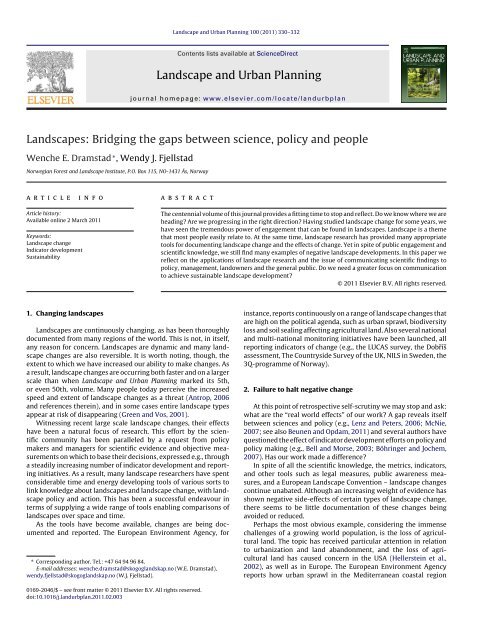
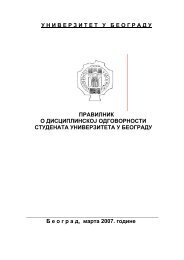
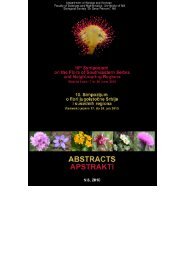
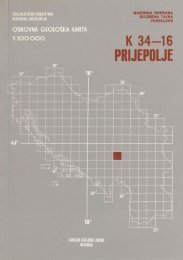
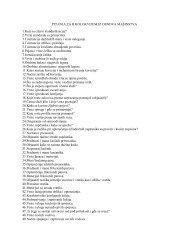
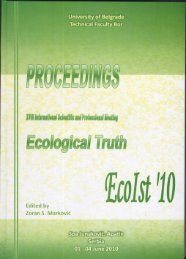
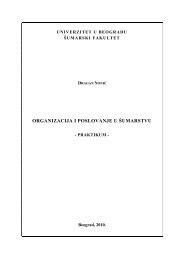
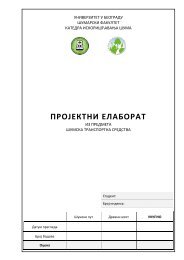
![Conference proceedings - Zbornik Radova[1].pdf - Univerzitet u ...](https://img.yumpu.com/40717868/1/184x260/conference-proceedings-zbornik-radova1pdf-univerzitet-u-.jpg?quality=85)
